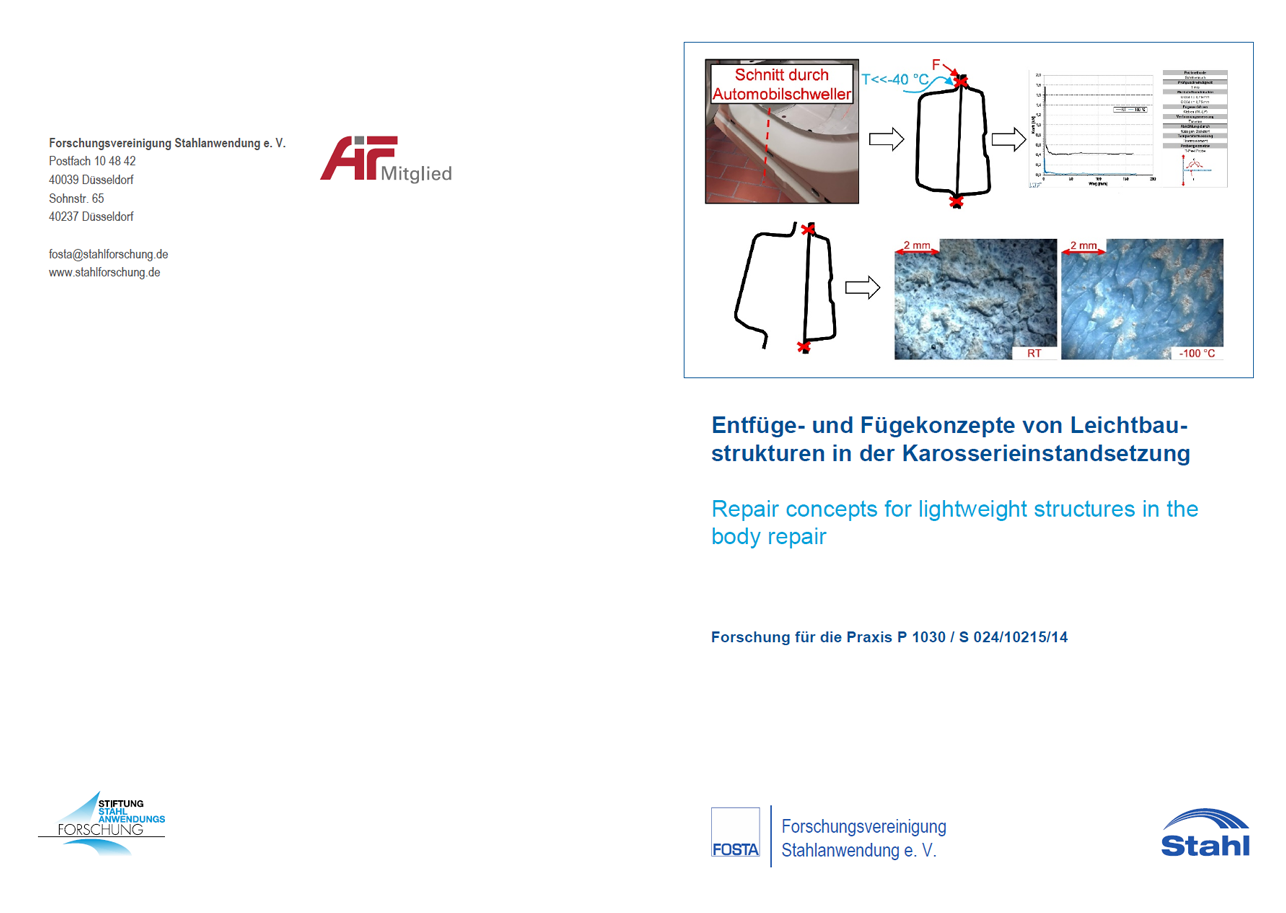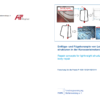Description
P 1030 – Repair concepts for lightweight structures in the body repair
In the course of a vehicle’s product life cycle, repairs may be necessary as a result of
accidents. To do this, the damaged vehicle structures must first be removed gently and economically. Today’s body concepts in particular pose a major challenge to repair shops in the event of removal. Different steel grades, from soft deep-drawing steels to thermoformed high-strength steels, are often used in mixed construction structures. In addition to spot-shaped thermal (resistance spot welding) and mechanical (self-pierce riveting) joining technologies, adhesive bonding is used as the joining process.
Within the framework of the project, the state of the art in the field of “Joining and Repair” of automotive joining technologies was recorded and the main challenges derived from this. These are, on the one hand, the removal of bonded joints in general and in particular in combination with high-strength steels. Currently, if necessary, an adhesive connection is chiselled or peeled with great mechanical effort. This can be done with the aid of heating, but is often undefined. In newer designs, peeling is no longer possible due to the use of high-strength steels and the high rigidity of the components. This was the starting point for more in-depth investigations.
The work packages were defined with a scientific approach and on the basis of the test concepts and methods established at LWF and HSHL.
Creative workshops were held to identify new solutions for the removal of joints made of high-performance materials based on the current experience of body repair specialists. The thermally assisted removal has proven to be a promising approach for the gentle separation of the bonded joints. This includes both high and very low temperatures. It could be shown that deep-freezing causes a strong embrittlement of the adhesive and the failure occurs without strong deformation of the joined parts. In addition, it could be shown that thermally supported removal up to 150 °C has no negative influence on the strength of the adhesive joints to be retained. After a successful joining operation, joints that had undergone practical repairs had a load-bearing capacity comparable to that of serial joints.
Published in:
May 2020
Authors:
Prof. Dr.-Ing. G. Meschut, M. Sc. J. Ditter, Dr.-Ing. M. Wünsche, Prof. Dr.-Ing. T. M. Wibbeke




